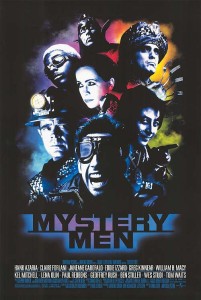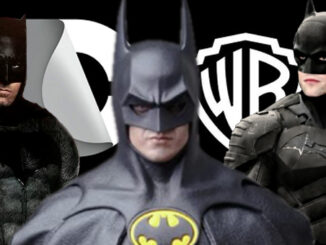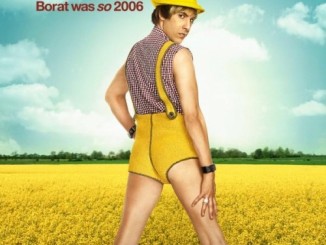In a multi-part series, Comic Book Film Editor William Gatevackes will be tracing the history of comic book movies from the earliest days of the film serials to today’s big blockbusters and beyond. Along with the history lesson, Bill will be covering some of the most prominent comic book films over the years and why they were so special. This time, we’ll talk about how the world of alternative comics made their way to the movie screen.
Much like as it was in music at the time, the 1980s marked the dawn of the alternative comic. Drawn from the underground comix of the 60s and 70s, but with a more literate and artistic temperament, alternative comics provided an alternative to the superhero dominated comic books that ruled the comic shops and newsstands. The output ran the gamut to the art comics such as Art Spiegelman’s RAW—where his Pulitzer Prize winning examination of the Holocaust, Maus, first appeared, the parody turned social satire of Dave Sim’s Cerebus, to sword-and-sorcery themed Elfquest by Richard and Wendy Pini and Bob Burden’s esoteric parody of the superhero, Flaming Carrot.
 It was in Flaming Carrot Comics where the Mystery Men first appeared. The character Flaming Carrot, created by Bob Burden, is hard to describe. He is a rough and tumble urban vigilante whose costume is a dress shirt, a pair of slacks, green flippers, and a giant carrot with flames instead of stalks for a mask. He’s like Batman, only instead of a Batarang, Flaming Carrot has a baloney gun, and instead of the Batmobile he has a nuclear powered pogo stick.
It was in Flaming Carrot Comics where the Mystery Men first appeared. The character Flaming Carrot, created by Bob Burden, is hard to describe. He is a rough and tumble urban vigilante whose costume is a dress shirt, a pair of slacks, green flippers, and a giant carrot with flames instead of stalks for a mask. He’s like Batman, only instead of a Batarang, Flaming Carrot has a baloney gun, and instead of the Batmobile he has a nuclear powered pogo stick.
The character and the comics he appeared in were a surrealistic parody of comic book tropes and into this world in 1987 came the Mystery Men. They were Burden’s surrealistic take on the superhero team, and 12 years later, they were brought to the big screen.
You could say that Mystery Men was ahead of its time. It came at the very beginning of the superhero movie trend, when the time wasn’t exactly right for parody. If it arrived five years later, it would probably have been better received. I thought of it as a pretty funny film. It had an all-star cast that ranged from Ben Stiller to William H. Macy to Greg Kinnear. Its tone was less esoteric than the comic it was adapted from, but it was still dark, unique and quirky comedy. It was greatly underrated.
The next indie comic book that was brought to the big screen was adapted from a miniseries that was never completed. Dark Town was created by writer Kaja Blackley and artist Vanessa Chong and detailed the adventures of a man who falls into a coma after a car accident and enters an alternate reality filled with talking puppets. He, armed with only his imagination, must climb out of this strange land before his body dies. There was only one issue published of the series, but that was enough for it to be optioned for a movie. That movie would be 2001’s Monkeybone.
 On paper, Monkeybone had a lot going for it. It was produced by Chris Columbus, the man who would bring Harry Potter to the big screen that very same year. It was written by Sam Hamm, a comic-friendly writer most famous for the first Batman film. And it was directed by Henry Selick, director of The Nightmare Before Christmas and James and the Giant Peach. That was a pretty good pedigree to have.
On paper, Monkeybone had a lot going for it. It was produced by Chris Columbus, the man who would bring Harry Potter to the big screen that very same year. It was written by Sam Hamm, a comic-friendly writer most famous for the first Batman film. And it was directed by Henry Selick, director of The Nightmare Before Christmas and James and the Giant Peach. That was a pretty good pedigree to have.
Perhaps they were hampered by having an incomplete story to work with. Or maybe the way they altered the original concept to fit the ending they wrote for the story. But the film that came as a result was a chaotic mess.
The main character was still sent to a surreal mindscape as a result of a grievous head injury. But he was now changed to being a cartoonist named Stu Miley and the landscape was one influenced by his most famous creation, Monkeybone. The plot involves the Stu’s attempt to escape the fantasy world he was trapped in and recover his body from Monkeybone, who took his place in the land of the living.
The film was an example of forced wackiness. Being wacky on film is not easy to do. The Marx Brothers were masters of cinematic wackiness, because it was effortless for them. When you force the issue, when you try too hard to be wacky, typically you fail miserably. That’s what happened here.
 Another creator with a penchant for surrealistic satire is Daniel Clowes. One of the biggest “superstars” of the indie comics scene, Clowes became an ipso facto voice of Generation X through works such as the Lloyd Llewellen miniseries and his anthology Eightball. His work captured the ennui that generation felt and was filled with characters with as many bad qualities as they had good ones to whom boredom was their greatest enemy.
Another creator with a penchant for surrealistic satire is Daniel Clowes. One of the biggest “superstars” of the indie comics scene, Clowes became an ipso facto voice of Generation X through works such as the Lloyd Llewellen miniseries and his anthology Eightball. His work captured the ennui that generation felt and was filled with characters with as many bad qualities as they had good ones to whom boredom was their greatest enemy.
Ghost World, directed by Terry Zwigoff and co-written by Zwigoff and Clowes himself from his 1997 graphic serial, captures the tone of the original work to a T. The film starred Thora Birch and a young Scarlet Johansson as two teenage outsiders in search of a sense of belonging in their small suburban town.
The pair garnered an Oscar nomination for their work on the script. The film was a modest success, which encouraged the pair to adapt another one of Clowes stories to the big screen. We’ll cover that film next time, along with two of the biggest and most iconic indie properties to be adapted to the big screen.




